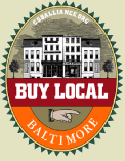Who Else Wants More Creativity and Less Competition?

“If you want to go fast, go alone.
If you want to go far, go together.”
African proverb
I have been listening to Riane Eisler’s brilliant book, The Real Wealth of Nations. It is a miraculous synthesis of her life’s work in the study of cultural values, gender relationships, and economics.
One framework that resonates particularly strongly is her characterization of cultures on a spectrum between two opposite modes: domination at one end and partnership at the other. This framework allows her analysis of current economic theory, policy and practice to be independent of political or social ideology. Any culture can be one of domination or of partnership, and never are they purely one or the other.
As she characterizes them, domination requires insensitivity, competitiveness, cruelty, and destructiveness. It inhibits the partnership qualities of consciousness, caring, and creativity. Human beings have the biological capacity for the full spectrum of all these traits. Whatever model our culture orients to will bring out, express, or inhibit these tendencies.
Domination systems are rigid, top-down rankings that are maintained through physical, economic, and psychological control. A superior / inferior worldview ranks men over women and humans over other species, leading to other rankings of in-group over out-group, which applies to anything including race, ethnicity, or religion.
By contrast, partnership systems value and support participation, empathy, equity and caring. In partnership structures, equality between women and men is the norm. Caring and care-giving are not seen as something “soft” and valueless, but as integral to both female and male identity. All social institutions, from the family, education and religion, to politics and economics, form a mutually supporting, interactive whole.
The take-home here is that cultural beliefs and stories underpin our entire economic system. If the stories justify domination as inevitable, even honorable, we get an exploitative, inequitable, and destructive economic system. Sound familiar?
This started me wondering: where we are at this point in our own culture’s evolution – and where do I fit in to that? I see signs all around me that we are in transition from a dominator to a partnership system. While it’s possible to argue that we have actually regressed in the last years (unjustifiable wars, great disparity between haves and have-nots, cuts to caring economic policies, and concentration of power at the top), it’s just as possible to look around and see signs of partnership emerging.
My work as an architect is, at its best, a partnership with clients characterized by mutual creativity and mutual benefit. Of course, architecture can be and has been practiced in a dominator style. But good – even great – work does not require or even need the exploitation of people or natural resources.
It’s possible to see the green building movement as evidence of the design and construction industries moving from a dominator mindset to one of partnership. Many of the materials that go into buildings are extracted from the earth in very destructive ways. It has only been recently that we began thinking about where materials come from, the environmental impacts of their fabrication, and what happens to them after the building has served its use. Green building at its best exhibits a profound respect for natural systems, and great care is taken to understand the affects of building at every stage of the game.
The design and construction process itself is moving from top-down, competitive practices to integrated, creative collaboration. As a faculty advisor on the University of Maryland’s LEAFHouse 2007 Solar Decathlon entry, I worked with scores of students, professional mentors, and other faculty to craft a process whereby we all learned from each other, each person’s input was valued and considered, and the whole was most definitely greater than the sum of its parts.
In my work with other LEED green design project teams, I have often observed this interplay between domination and partnership. Early in a project, there is a great desire for collaboration. Yet, since our culture’s center of gravity still pulls us towards domination, this intention of mutual cooperation for mutual benefit is frequently undercut by passive – or even overt – competitiveness, power-over attitudes (“My way is the right way”) and stereotypical beliefs (“Architects are technically weak.”). My role is to help people work more effectively together as they move from competitiveness to creative collaboration.
Other examples of the shift from domination to partnership can be found all around us. The Community Conferencing Center, started ten years ago and still led by my friend Lauren Abramson, is a fine example of the power of partnership in transforming conflict and building community. Indeed, conferencing is a highly effective alternative to the dominator-based traditional criminal justice system.
In the health care community, alternative medicine is becoming more mainstream. My son’s food allergies could not be helped by the traditional medical establishment with its dominator mind-set of FIGHTING illness. To be sure, I am grateful for their medications like Benedryl (an ANTI-histimine) and the Epi-Pen, which we fortunately never had to use. For the last three years, he has been under the gentle, subtle care of a homeopathic doctor and has outgrown ALL of his food allergies. Homeopathy works in partnership with his developing immune system, which may sound like mumbo-jumbo to those of us steeped in the dominator vocabulary of modern medicine. The healers at places like Tai Sophia Institute understand the awesome capacity for self-healing within the human immune system and use both ancient and modern wisdom to stimulate it.
This transition finds us in an awkward stage. So many of our cultural institutions – schools, courts, government – are built around the domination system. Indeed, our history, values, economy, and culture are steeped in domination, to the point where it is so imbedded we often fail to recognize it at work. Yet, the dominator system doesn’t fit for many of us – whether by default or temperament. As we reach for the partnership system, we can find ourselves mightily challenged by naysayers, lack of training (how DO we get people to trust and value each other?) and other setbacks.
Eisler’s book has been a real awakening for me and a reminder that I am absolutely on the right path. Partnership allows us to value everyone’s input and to widen the framework to include the human and natural capital that has been left out of dominator economic systems. Yes, we still have a very long way to go. And, yes, great progress is being made.
Next time you read about a policy debate in Washington, look at what the people are saying and ask yourself, “Is this coming from a domination mindset or one of partnership?” In fact, this question can apply to any situation in our lives and work. I hope that I have the awareness of it next time I have a dust-up with my seven-year-old son. What does partnership parenting look like, instead of the domination model I grew up with?





 View the dynamic, moving GOforChange: Greening Baltimore video
View the dynamic, moving GOforChange: Greening Baltimore video

Comment by Mare Cromwell on 16 February 2009:
Hi Julie,
This is a very interesting post and near and dear to many of my thoughts. My life, as you know, is not very mainstream. But some of your points (Riane Eisler’s and your’s ;~) about shifting from Domination-based to Partnership-based are well-taken. Within my gardening business, I’ve really pushed myself to grow beyond needing to be ‘controlling’ and ‘autocratic’ as I work with my assistants to involving them more in the decision-making when we have a challenging area to tackle, with some newer challenges that we don’t usually face.
I’ve found that this encourages them to be more confident giving me feedback in various aspects of how I work including how I run the business, promote it, etc. I grow more as a person that way, and I hope that they do too. I see my little gardening business as a microcosm of the greater world around us in that we’re a small little community trying to do good work and evolve as we do it. Connect more with the earth, each other, talk about our issues, in general soak up some of the good garden therapy energy that these beautiful green spaces offer. And we have fun because I’m laid back, fair (try to be) and really patient and supportive of them.
To me, working with people is not about money or the end goal of a beautiful garden solely. Yes, my clients want their gardens beautiful and rightfully so. But to me the goal is to be in their gardens in a way that is balanced, caring, respectful to my clients, to my assistants, to myself, and even to the plants, for they are part of the community too. And, as you know, research has shown that plants flourish when given more empathic attention. It’s fun to see the results sometimes. Some of my clients have said that some of their plants have never bloomed until I came to work for them. I can’t say that I got their plants to bloom, but I can say that I gave them some care.
Anyhow, I’m getting long-winded here. But I really like the overall premise of Riane Eisler’s book from what you’ve written and would take it a step further to considering the dominator stance toward nature – How has this helped our relationship with the natural world?
some two cents. ;~)
Thanks for your continued amazing work on GoforChange with Alyssa. I know that this is largely an act of service and love for you.
mare
Comment by Deborah Smith on 27 February 2009:
Hi Julie,
Thank you for bringing this to my attention. It was there all along, but did I notice it? Not quite, maybe little nuances but it has never before been presented to me as such a dynamic system. I had an A-HA moment. Riane Eisler and you have a keen sense of observation and as this has been pointed out, I am seeing this in many aspects of life. I especially see it in work life as I once belonged to an organization that prided itself (and rightly so) on empowering others and recognizing when one helped others to grow for the benefit of the whole, where another organization had no such ability to honor this and was steeped in dominator tradition, although they had an altruistic mission. It was just the way things were done. If one doesn’t automatically have this kind of programming, it is hard to change the way one thinks. Hopefully this book will open people’s eyes and they can ask themselves, “am I being the best partner I can be for the greater good?” Thank you.
Comment by Jack Arnold on 17 May 2009:
Hi Julie,
Do my homework, and now have another book to read – or maybe not. I know that the condor is in the air, and in some ways once again flying with the eagle.
The Eagle and the Condor
The Masculine and the Feminine
The Engineer and the Artist
The Mathematician and the Musician
The Doctor and the Healer
The West and the East
The Professor and the Shaman
The Left Brain and the Right Brain
I can add another to my list:
The Dominator and the Partner
Thanks
Jack